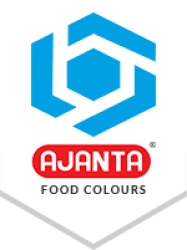_1760470828.jpg)
In today’s fast-moving world of food, cosmetics, pharmaceuticals, animal feed, and personal care industries, a product’s appearance plays a crucial role. Colours not just give an appealing look, they also define the product’s freshness, flavour expectation, and brand recognition. However, maintaining the colour appearance during the manufacturing, storage, and over the shelf life is a very challenging task for manufacturers. This article discusses the changing face of the world of manufacturing through microencapsulation and advanced colour delivery systems and how manufacturers use synthetic food colours.
What is Microencapsulation in Food Colours?
Microencapsulation is the technology involved in wrapping colour molecules or pigments in an enclosing matrix or coating. These microcapsules may be only a few micrometres or several millimetres. The coating serves as a barrier to the core colour, which protects it from and the core colour from adversities like light, oxygen, heat, and, as well as fluctuations in pH, which can deteriorate or change the colour.
In simple words, Microencapsulation acts as a protective shell on colours that preserves their quality, vibrancy, and performance until it is released on the products.
Why Microencapsulation Matters for Colour Stability
Such colour instability can become a great inconvenience to manufacturers, especially in the case of fading and discolouration caused by long storage or processing periods and the exposure to light, air, and temperature shifts. Microencapsulation technology is designed to prevent these headaches. Let's see how microencapsulation technology helps overcome these challenges of manufacturers:
Enhanced Shelf Stability: Encapsulated synthetic colours maintain the brightness and vibrance of colours for a long period of time, allow manufacturers to longer colour storage.
Protection from the effects of heat and light: Colour coating protects them from breaking down during baking, extrusion or pasteurisation.
Better spreading: The use of encapsulation ensures that the colour spreads well on products thereby preventing color spots or unequal coloring on products.
Lower Transfer: For confectionery and baked goods as well as other products comprising layers, the use of shell synthetic colours guarantees that colours do not bleed between many layers.
Controlled release: Colours are also engineered to release at a particular stage. For example, mixing, heating, or getting wet; hence, they can be very accurate in their performance.
The advantages of using microencapsulated colours in products show are that they are particularly helpful for manufacturers of food, beverage, confectionery, cosmetic, and pharmaceutical applications.
Popular Techniques Used for Encapsulating Food Colours
There are various techniques that food colour manufacturers use for the encapsulation of colours. These methods depend on the stability, solubility, and cost requirements. Here are some commonly used techniques:
Spray Drying:
The most common and cost-effective method is where colourants are mixed with a carrier like maltodextrin or gum arabic and then spray-dried into powder form.
Applications: Instant beverages, bakery premixes, and powdered soups.
Coacervation:
It employs gelatin, cellulose, or alginate in forming a thin polymer film around the colour bodies.
Applications: Coating for capsules and coatings for confectionery and dairy products.
Fluid Bed Coating:
Fluid Bed Coating is best for products that require uniform coating in products. This is used for encapsulating pigments and lake colours.
Applications: Fluid Bed Coating is used in Pharmaceutical tablets and nutraceutical formulations.
Liposome Encapsulation:
Liposome encapsulation uses lipid-based vesicles to entrap colourants offering great biocompatibility and slow release.
Applications: Creams, lotions, and functional drinks.
Each method has its own allocation toward the achievement of a certain characteristic by which manufacturers can play with colour performance depending on the product type and environmental conditions.
Applications of Encapsulated Synthetic Colours
Manufacturers around the world are using the microencapsulation process to provide colours to their products. Some of the industries where microencapsulation colours have found applications are as follows:
Food & Beverages: In the ready-to-drink beverages, bakery filling, dairy, confectionery, and instant mixes, it improves their stability and consistency.
Cosmetics: It gives a uniform dispersion that flows between the cosmetics and personal care industry in creams, lipsticks, and other makeup. It enhances colour retention under exposure.
Pharmaceuticals: In pharmaceuticals, these colours ensure controlled release in capsules and syrups while maintaining their colour uniformity.
Animal Feed & Pet Food: In the pet foods, it reduces the colour degradation during extrusion and improves the visual appeal of products for branding consistency.
By applying encapsulated synthetic food colors to their products, manufacturers can attain superior performance in adverse processing conditions.
Advanced Delivery Systems – The Next Step Forward
Microencapsulation technology has utility in advanced delivery systems and the technology keeps improving to help colour performance. There is greater improvement in stability and compatibility with the recent fusion of encapsulation and nanotechnology, polymer science, and bio-based coatings.
Recent innovations include:
- Smart-release systems that trigger colour only under specific pH or moisture levels to help conceal a product.
- Multi-layer encapsulation systems that help with dual encapsulation to protect a product against oxidation and light exposure.
- Sustainable encapsulants of plant polymers help eco-formulations.
Reframed by colour behavior tuning advanced systems provide shelf life and maintain trust regarding consistency of the product. Encapsulation and modern integration of colour stability and compatibility enhanced by nanotechnology, polymer science, and bio-based coatings have become the new industry standard.
How Ajanta Food Colours Ensures Colour Stability
At Ajanta Food Colours, we understand how important the colour stability of products is for manufacturers who want to maintain quality, visual appeal, and customer trust. We use advanced encapsulation and formulation machinery, which allows us to deliver colours that are not only vibrant but also stable and compliant with international standards.
We supply a wide range of FD&C-certified synthetic colours, lake colours, and custom encapsulated colour solutions for various manufacturing industries, which include food, beverages, cosmetics, pharmaceuticals, animal feed, and personal care. All our colour manufacturing plants follow strict quality and safety guidelines that ensure Ajanta’s every colour batch performs consistently with the real-world applications.
Conclusion
Microencapsulation and advanced delivery technologies are defining how manufacturers use synthetic food colours in their products. These advanced and state-of-the-art technologies offer a perfect balance of stability, performance, and visual brilliance, which allows brands to maintain their product’s appearance even under demanding processing and storage conditions.
Industries that continue to innovate, investing in microencapsulated and stable colour systems, will achieve higher product quality and brand trust. For manufacturers seeking stable, high-performance synthetic colours, Ajanta Food Colours offers innovative colour solutions that are especially designed to enhance your formulations. Because every shade matters when it comes to perfection!




